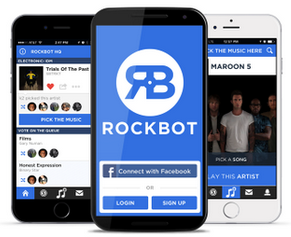What happened to the jukebox? You remember it: the giant machine in the corner of your local pizza joint, its glass smeared and scratched from eager music-loving hands, the pages of oldies and top-40 hits that you flipped through with your friends. It was always a fun thing—choosing your own songs. But as much as nostalgia is tickled by the coin-operated music experience, today's social, mobile world has gradually taken over jukebox history and brought on a new wave of digital music services.
The growth of the internet enabled a whole new world of jukeboxes, unbounded by the limitations of physical media. New jukebox companies filled this opportunity delighting customers with a music selection that far exceed the confines of vinyls in a 5-ft. tall box. While the current generation of digital jukeboxes offers more selection than ever, they have fallen short on the curation and control that business want. Despite the technological innovation, frustration by business owners has driven the decline of the jukebox from a peak of 500,000 units today's 100,000.
Many of these businesses migrated from the jukebox to background music services that provided continuous curated music to match the vibe of their location. They sacrificed customer engagement for control. The solution worked well at first but due to the limitations of the delivery mechanism (CDs or satellite stream) the music quickly became repetitive.
Today's customers have come to expect the selection of the consumer services they use, while business owers expect control and curation combine with an engaging customer experience.
Is the jukebox destined for extinction or just a rebirth for a mobile world? Here’s a rundown of what really happened in the course of jukebox history.
- 1890 - Louis Glass and William Arnold invent a nickel-in-the-slot phonograph with four ‘listening’ tubes. Users would insert a coin and then crank a spring-loaded lever to play their tunes.

- 1896 - The ‘Louis Glass’ jukebox debuts at the Palais Royale in San Francisco. It was a four-tube model, and users were given towels to clean the tubes in between listens.
- 1918 - Hobart C. Niblack creates a machine that automatically changes records—marking a huge step in easy listening.
- 1927 - The Automated Musical Instrument Company, later known as AMI creates one of the first selective jukeboxes, using Niblack’s patented record-changing system.
- 1928 - Player piano manufacturer Justus P. Seeburg melds an electrostatic speaker with a coin-operated record player, creating the Audiophone. The machine featured eight separate turntables on a Ferris-wheel-type device, allowing listeners to choose between eight records. Seeburg soon created the Selectophone, which boasted 10 vertical turntables (and greater song selection).

- 1930’s - Most phonographs featured dance records to cheer post-depression sensibilities, and European distributors supplied classic songs.
- 1940 - Americans start throwing the terms "jukebox" and “juke joint” around in conversation. Juke—translated as rowdy—came from the Gullahs—a group of African American slavery descendants who spoke a form of Creole in the Southeastern U.S. With its newer, cooler name, jukebox popularity boomed.
- 1953 - Seeburg rolls out the snazzy M100C—the exterior of which could be seen whenever the credits rolled on Happy Days. (Think bright colors, chrome, glass and mirrors.) The machine played fifty 45‘s, allowing for 100 songs in its roster.

- 1967 - Rock-Ola introduces the 434 Concerto, the jukebox featured during the Happy Days intro sequence. It ran a lot like the Seeburg M100C (with 100 plays), but featured an updated (read: new-to-the-times) playback system.
- 1970’s - Jukeboxes are the norm. The Kinks even record “Jukebox Music” for their Sleepwalker album.
- 1989 - Wurlitzer introduces a compact-disc jukebox, allowing for a major upgrade in sound clarity.

- 1998 - TouchTunes introduces an internet-enabled digital jukebox in North American bars and restaurants. Other players in the digital interactive media sphere such as eCast spring up as well.
- 2001 - Apple launches the first iPod putting on-demand music in the palm of your hand.
- 2011 - Spotify launches with U.S. service (after launching abroad in 2008), providing users with access to millions of on-demand songs in the cloud.
- 2010 - Rockbot launches the world’s first mobile jukebox app—allowing users to select their own songs at Bar Basic San Francisco. By providing a licensed business music service, Rockbot replaces the bar's digital jukebox and background music service.

The jukebox continues to evolve in the smartphone-social media world. While the Rock-Ola offers a nostalgia everyone loves, today's digital music services and mobile jukebox apps provide a new level of customer engagement and marketing for businesses.

Editor's Note: This blog was originally published on April 2, 2014, and was last updated on December 4, 2023.






